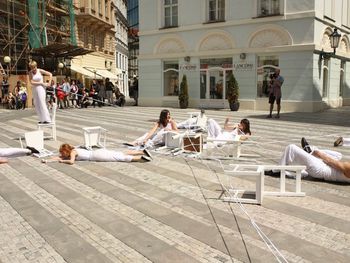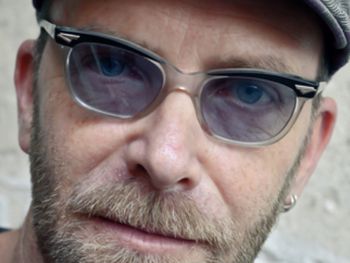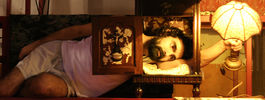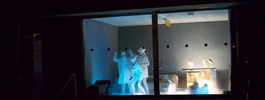
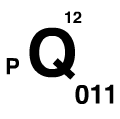
The Netherlands » Objects
The Bag of Sinterklaas Always Carried by Black Pete
Every year during three weeks from November till December 5, Holland is completely immersed in 'Sinterklaas', a world in itself. A big theatrical feast wherein everybody plays together to make the children believe in Sinterklaas. The songs of Sinterklaas are everywhere in the shops, the classrooms and the houses as are images of Sinterklaas and his servant Black Pete. Sinterklaas is a merry feast and if you have been sweet, you will get presents. Sinterklaas and his Petes always arrive by boat from Spain during the days that are short, grey and gloomy. After he arrives, Sinterklaas, an old man with a white beard in a red cloak, parades on his white horse through the city, dozens of Petes jumping around him or playing music or throwing sweets around. In the weeks after his arrival he rides by night over rooftops and the Petes climb into the chimneys to put small presents in children's shoes. For weeks they are excited. Believing is a piece of cake; everyone in the Netherlands cooperates, all adults act like Sinterklaas really exists, telling the same story and explaining the odd facts. Including the mayor, who welcomes Sinterklaas in the harbor. During Sinterklaas no one is allowed to give away the big secret to a child. One day, a child will start doubting all on his/her own. Slowly becoming aware of costumes and play-acting. From then on they themselves have to cooperate in the Netherlands' biggest theatre performance. A task they often take very seriously. Black Pete is loved and admired by the children for his jolly capers, elastically moving like an acrobat, able to jump over rooftops and climb into the chimneys. He is the only person allowed to make fun of Sinterklaas. Originally Black Pete was a Moorish prince in a beautiful velours suit with golden broidery. In those days he and Sinterklaas were not only exciting but also a bit scary. Sinterklaas always knew it when children had behaved badly, as this was all written down in his Big Book. Sinterklaas’ bag, always carried by Pete, was a Dangerous Bag. If you had been naughty, you were given a slap with the rod, taken away and put into the bag. All the adult people warned children about this, throughout the year. Once put into the bag, you would be taken along to Spain. But Black Pete has changed over the years. He has stopped being a Moorish prince for a while already. He stopped putting children in the bag. Thanks to a special Sinterklaas Journal that reports during three weeks daily on national TV about Sinterklaas' and Petes' travel and adventures, Black Pete has now also acquired new adjectives, allowing for more character development: Panic Pete, Quick Pete, Decorate Pete etc. The dark black paint on his face has been replaced by professional make-up, put on till behind his ears, turning him more brownish. In our current multicultural society Black Pete also has become recognized as post-colonial residue. Not everybody considers Sinterklaas to be a happy and merry feast; a growing number of critics remind us every year of our colonial past that has hardly ever been critically investigated. We did not acknowledge the pain nor did we apologize for our deeds. For them the acrobatic servant Black Pete is a humiliating racist trope. At the same time Black Pete is about to become an icon for both nationalists defending this traditional feast and for locals trying to get this feast with Sinterklaas, Black Pete and the bag on the Unesco list of Cultural Heritage. In 2014 the Sinterklaas Journal tried to save the best parts of the tradition. Old Pete, the most experienced Pete, got his own horse and now wears the same clothes as Sinterklaas. Together they went back to Spain. http://sinterklaasjournaal.ntr.nl/#/home

